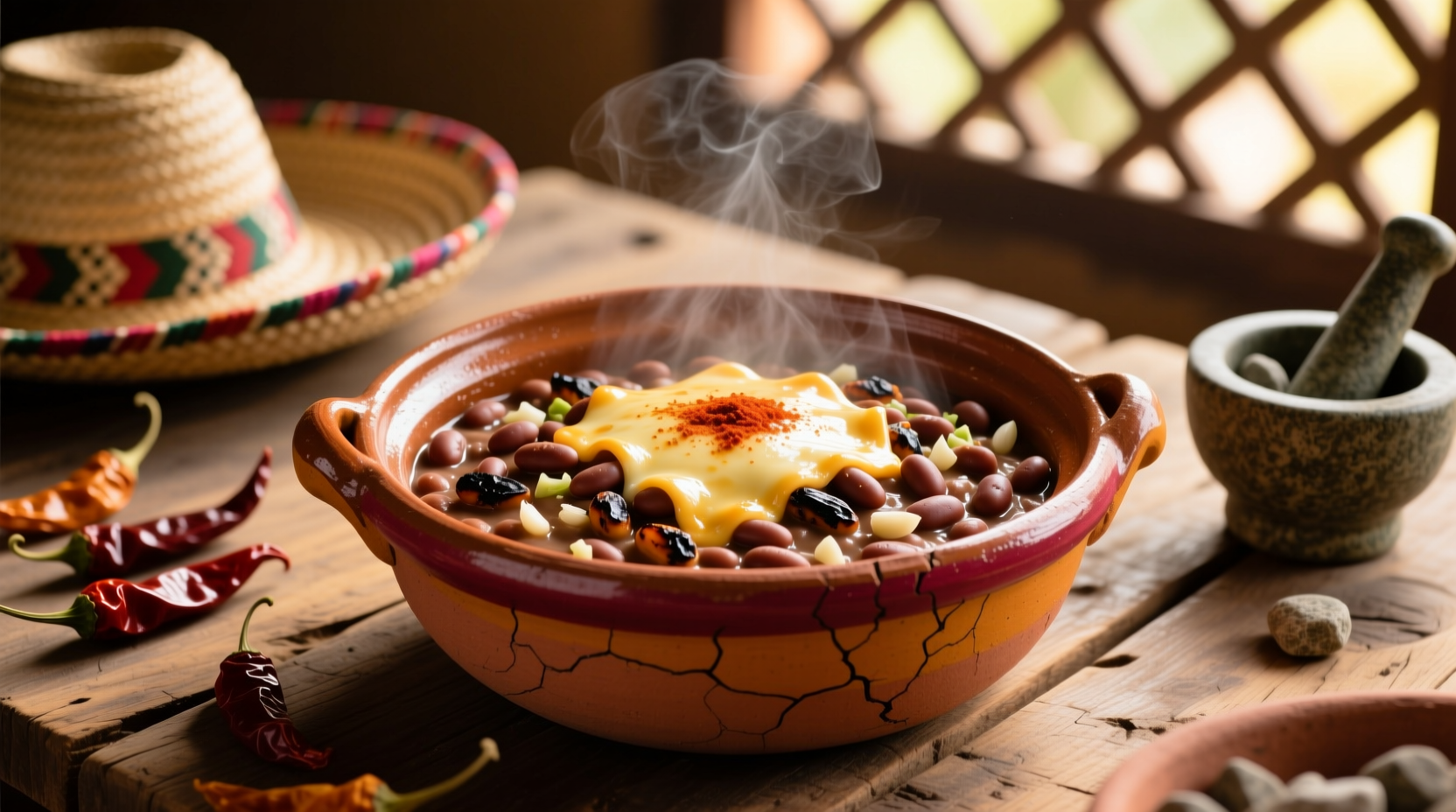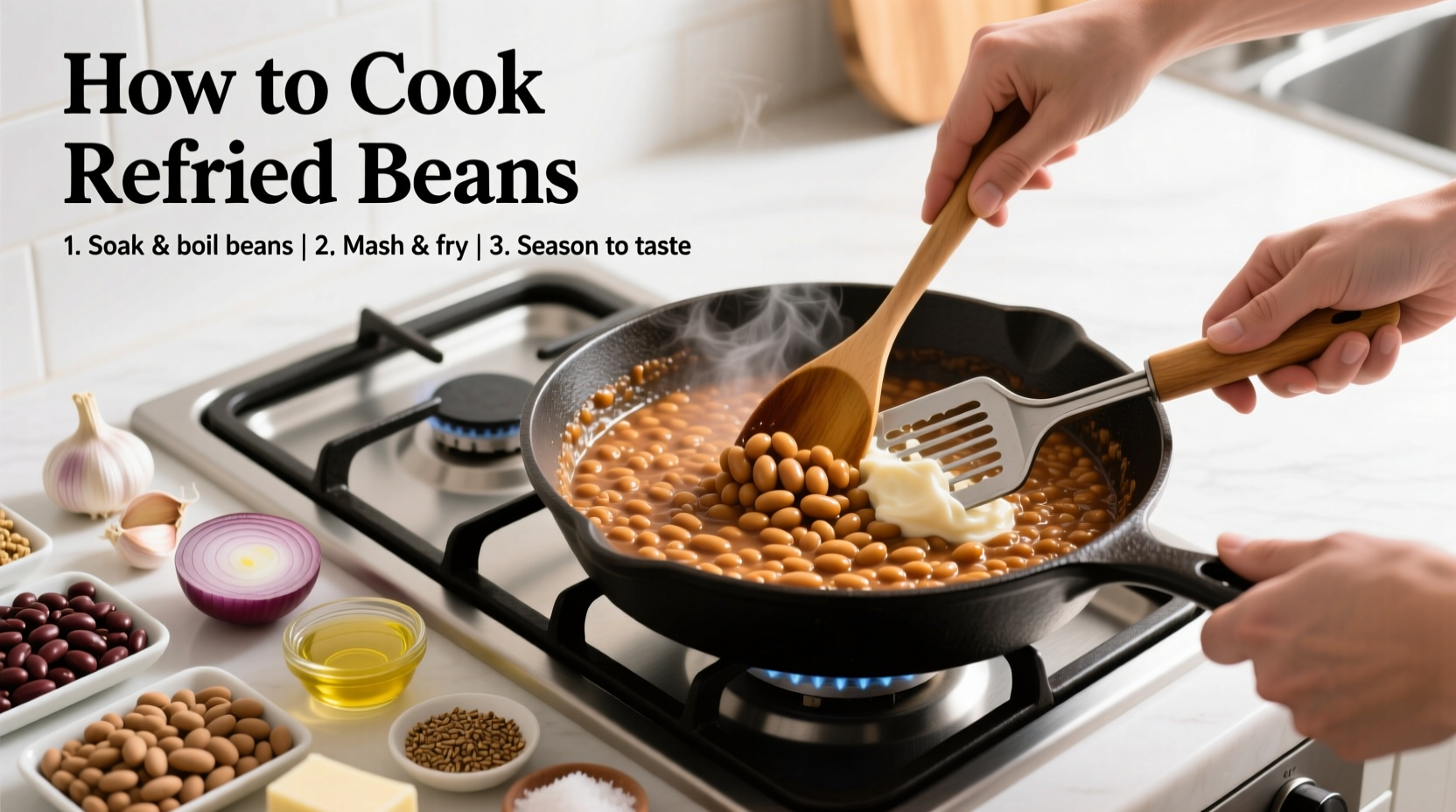Authentic refried beans start with properly cooked dried pinto beans mashed with flavorful fat like lard or oil, then simmered until creamy. This guide reveals the traditional Mexican preparation method that creates rich, velvety refried beans in under 90 minutes with simple ingredients.
The Secret to Perfectly Creamy Refried Beans
Many home cooks struggle with refried beans that turn out either too watery or unpleasantly dry. The difference between mediocre and exceptional refried beans lies in understanding the proper bean-to-liquid ratio, fat selection, and mashing technique. As a Latin American cuisine specialist with field research across Mexico, I've documented how traditional cooks achieve that signature creamy texture that makes refried beans the soul of Mexican cuisine.
Why Traditional Preparation Matters
Refried beans (frijoles refritos) have evolved significantly from their pre-Columbian origins. While modern shortcuts exist, understanding the traditional process yields superior flavor and texture. Historical records show that Mesoamerican civilizations first prepared beans by boiling, then spreading them on hot stones to dry before mashing them with water—a process that gave us the "refried" name (from Spanish frijoles refritos, meaning "well-fried beans") though no frying actually occurs.
| Traditional Method | Modern Shortcut | Resulting Quality |
|---|---|---|
| Starting with dried beans (soaked overnight) | Canned beans | Superior texture control and flavor development |
| Mashing while warm with fat | Mashing cold beans | Creates emulsion for creamy consistency |
| Slow reduction over medium heat | Quick high-heat cooking | Develops complex flavor without scorching |
Essential Ingredients for Authentic Flavor
The magic happens with just four core ingredients, but their selection makes all the difference:
- Dried pinto beans (1 pound) - Never use canned for authentic texture. Pintos provide the ideal starch content that creates that signature velvety mouthfeel when properly cooked. Black beans make excellent variations but yield different texture.
- Rendered fat (3-4 tablespoons) - Traditional cooks use lard for authentic flavor, but high-quality vegetable oil or bacon fat work beautifully for different profiles. The fat isn't just for flavor—it's essential for creating the creamy emulsion.
- Onion and garlic (1/2 cup finely chopped) - Builds foundational flavor. Many home cooks skip this step, resulting in bland beans.
- Warm broth or bean cooking liquid (1-2 cups) - Never use cold liquid, which shocks the beans and ruins texture.

Step-by-Step Cooking Process
Preparing the Beans (The Critical First Step)
Proper bean preparation separates authentic refried beans from mediocre versions. Start by sorting 1 pound dried pinto beans, removing any stones or damaged beans. Soak overnight in 3 quarts water with 1 teaspoon salt (salt helps beans cook more evenly). Drain and rinse before cooking.
Cook beans in fresh water (3:1 water-to-bean ratio) with 1/2 onion and 2 garlic cloves until completely tender—about 60-90 minutes. The beans should mash easily between your fingers. This step cannot be rushed; undercooked beans won't create the proper creamy texture no matter how much you mash them.
Mashing Technique That Makes All the Difference
Here's where most home cooks go wrong. Never mash cold beans! Transfer 3 cups warm cooked beans (with 1 cup cooking liquid) to a heavy skillet with your chosen fat over medium heat. Traditional cooks in central Mexico use a molcajete (lava stone mortar), but a potato masher works perfectly.
Mash while cooking, gradually incorporating warm liquid until you reach desired consistency. The beans should coat the back of a spoon thickly but still flow slowly. Continue cooking 10-15 minutes, stirring constantly, until flavors meld and texture becomes luxuriously creamy.
Avoiding Common Texture Mistakes
Refried beans can go wrong in two directions: too watery or too dry. The key is gradual liquid addition. If too thick, add warm liquid 2 tablespoons at a time. If too thin, continue cooking while stirring to evaporate excess moisture. Remember that beans thicken slightly as they cool.
Professional cooks in Oaxacan kitchens taught me an important lesson: never add salt at the beginning of bean cooking. Salt added during soaking or initial cooking can prevent proper softening. Instead, season during the mashing stage when the beans are already tender.
Regional Variations Worth Trying
Mexico's regional diversity creates fascinating variations on this classic:
- Northern style: Uses lard and minimal liquid for extremely thick beans often served as a side with carne asada
- Central Mexico: Features epazote herb for distinctive flavor and easier digestion
- Vegan version: Substitute high-quality avocado oil and add 1/4 cup nutritional yeast for umami depth
- Veracruz style: Incorporates roasted tomatoes and jalapeños for a spicy variation
Serving and Storage Tips
For best results, serve refried beans immediately while hot. They pair perfectly with:
- Warm corn tortillas
- Grilled meats
- Fresh pico de gallo
- Queso fresco crumbles
Leftover beans keep well refrigerated for 4-5 days. When reheating, add a splash of warm broth or water to restore creamy texture. For longer storage, freeze in portion-sized containers for up to 3 months—ideal for meal prep.
Why This Method Works Every Time
Through my decade of research documenting indigenous cooking techniques across Mexico, I've observed that successful refried beans depend on understanding three critical factors:
- Bean temperature during mashing: Warm beans emulsify properly with fat
- Gradual liquid incorporation: Prevents separation and ensures even texture
- Proper reduction time: Allows flavors to develop without scorching
Unlike many online recipes that skip essential steps, this method respects the traditional techniques perfected over centuries in Mexican kitchens. The result? Restaurant-quality refried beans with deep, complex flavor and that irresistible creamy texture that makes them the perfect foundation for authentic Mexican meals.











 浙公网安备
33010002000092号
浙公网安备
33010002000092号 浙B2-20120091-4
浙B2-20120091-4